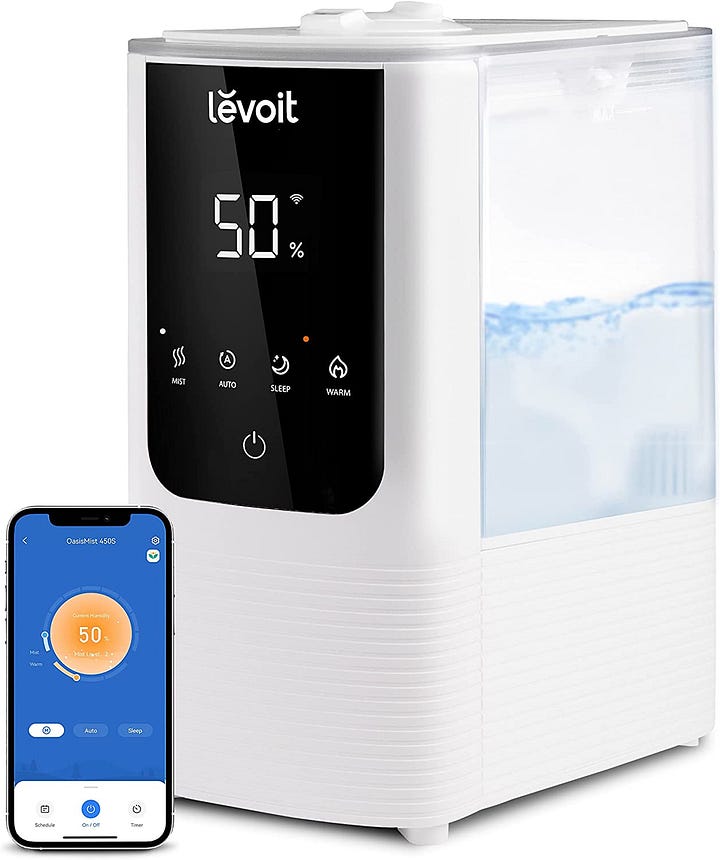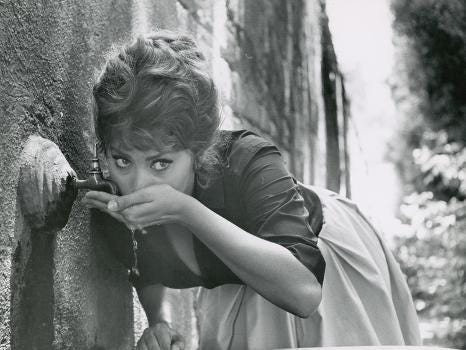How to Hydrate Your Skin, Really
Sorry, hydration homies, it's not really about drinking water. Let's talk about transepidermal water loss
Ask any beauty editor how every celeb answers the question “what’s your best skin care tip?” and they’ll quickly reply with some version of “DRINK WATER.”
Yes, for your general health (and for some depuffing), you absolutely should stay hydrated and try to drink eight glasses a day. (Side note: I once knew someone who bragged that she never drank water. She only drank coffee and wine. Don’t do that.) But if you have dry, dehydration-prone skin like mine, I’m sorry to say that guzzling water is not going to get that skin looking plump and juicy.
Okay, so first thing’s first. A lot of people use the terms dry and dehydrated interchangeably. Same with moisturize and hydrate. Let’s break down how they’re different.
DRY is a skin type that has to do with a lack of OIL production.
DEHYDRATED is a temporary state caused by lack of WATER in skin cells.
And keep in mind: Anyone can have dehydrated skin, even if your skin is oily.
To HYDRATE skin, you infuse cells with WATER.
Then you MOISTURIZE to lock hydration in to PREVENT WATER LOSS.
I know you may be expecting me to recommend serums and moisturizers right now (I’m actually going to publish a bonus newsletter on Wednesday as a companion to this post with some product recommendations—yes, there will be snail) but the purpose of today’s edition is to talk about how our environment and specifically humidity can affect our skin.
One of the reasons why it’s tough to recommend a one-size-fits-all skin care routine is because 1) everyone’s skin is different and 2) there are lots of variables in our environment that can throw this hydration balance out of whack. For example, summers in Miami are extremely humid but you may spend all day in a heavily air conditioned building. Once humidity levels drop below 40 percent, water essentially starts to evaporate from your skin into the air (aka transepidermal water loss or TEWL). The air is basically turning you into a dried apricot. And it’s not just air conditioning. Forced-air heating is also extremely drying. In contrast, our second apartment in NYC was in an old pre-war building with a steam radiator and it was extremely loud but wheeww the skin was glowing.
The ideal relative humidity in your home is between 40 and 50 percent; any higher and you could risk mold. Some thermostats have built-in humidity gauges. Or you can buy a cheap hygrometer on Amazon if you really want to track it.
Use a humidifier, people!


Most people tend to only think about using humidifiers during cold and flu season, but they can be a great skin care tool all year ’round.
The Canopy Humidifier looks pretty and is marketed toward skin and wellness. You can also get an aroma puck for it if you like that type of thing.
But truly, you could use any good quality humidifier. This Levoit one is also highly reviewed and a bit less pricy.
READ: I Tried 100+ Dark Spot Correctors and Here’s What Worked [free story]
I got a portable humidifier as a gift for the holidays that I bring sometimes when I travel (chances are, you’re already dehydrated from the flight and then hotel air can also be very dry). It’s a cute little gizmo but I’m not going to recommend it here since, even though mine is still working, it hasn’t gotten great reviews because a lot of users have complained that theirs broke after a few weeks.
Be kind to your skin
Having a weakened skin barrier from using too many harsh ingredients can also make water loss worse. About five years ago, I had a TEWL perfect storm.
Keep reading with a 7-day free trial
Subscribe to Go Ahead, Try Me to keep reading this post and get 7 days of free access to the full post archives.






